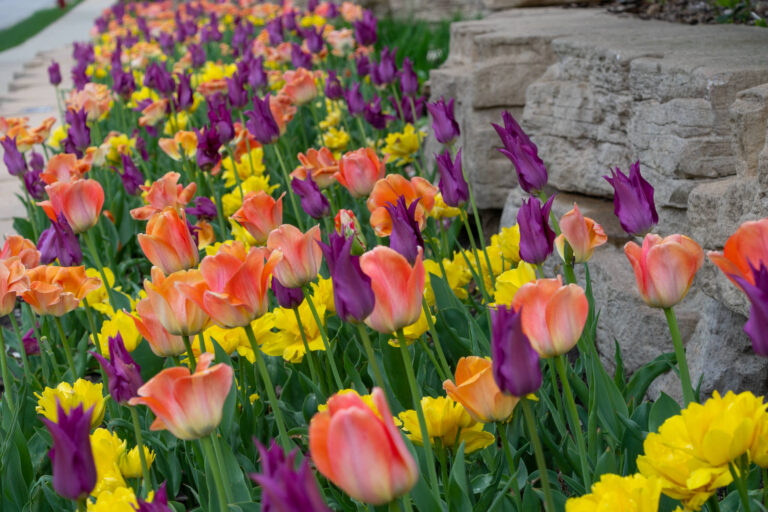
Planting tulip bulbs might seem like a daunting chore, especially if you’re looking to grow a dense or large bed of spring flowers with hundreds of blooms. But don’t worry; you don’t have to dig an individual hole for every flower you want to plant. In this article, we’ll discuss a technique that allows you to plant 100 bulbs or more in about 30 minutes.
Step 1: Dig a Trench
Using a long-handled shovel or spade, dig a trench in your flower bed to the appropriate depth for the bulbs you intend to plant. Tulip bulbs typically need a planting depth of 5 inches, while daffodils need a planting depth of 6 inches. Planting depth is measured from the bottom of the trench to the top of the soil. It’s a good idea to check any planting instructions that come with your bulbs for the recommended depth.
It can save time to put the dug up soil on a plastic sheet (a large trash bag works well), a big piece of cardboard, or a sheet of plywood. This helps keep the area neat and minimizes cleanup.
Step 2: Add Bulbs
Pour the bulbs into the trench, then arrange them into your desired pattern and pointing upwards. You can make rows of bulbs or spread them more randomly for a natural look, but it’s a good idea to make sure they’re evenly spaced and not touching. Don’t worry too much if some of the bulbs fall over—the plant will send roots down even if it’s on its side.
Step 3: Fill the Trench
Cover the bulbs back up with soil. If you’ve placed the soil on plastic or a board, you can pour it back over the bulbs, taking care not to disturb their arrangement. Otherwise, gently shovel the soil back into the trench. In either case, you’ll want to pack the soil down lightly and smooth out the top for nice, even coverage.
Step 4: Finish the Bed
The final step is to spread a layer of mulch over the bed to prepare it for winter, and water the bulbs in. If you have squirrels in your area, you may want to take an additional step to protect the bulbs from being dug up by covering the bed with a screen, chicken wire, or hardware fabric.
You can learn about other time-saving planting approaches in our guide to different planting techniques.



